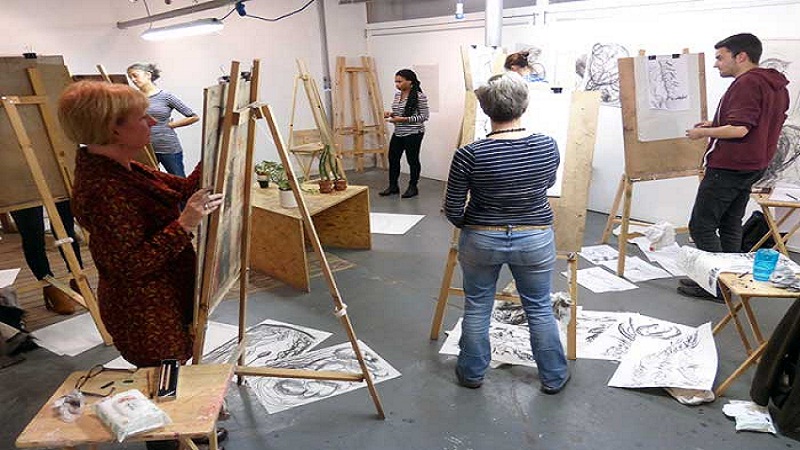Many artists use art not only to express their ideas and thoughts but also to relieve stress. Artists claim that creating art can provide a catharsis for difficult emotions, distract you from your worries and much more. Also, getting into the state of “flow” can also be restorative for your mind. As all the mentioned benefits aren’t enough, you will get a beautiful piece of art in the end.
It is essential to know that art shouldn’t be created and enjoyed only by those who are talented or artistically inclined. Art should be created and enjoyed by everyone. Studies show that art therapy can help you relieve anxiety, depression, and stress. So, if you are feeling tense and need a natural and fun way to unwind, it’s time to get some brushes, colors and a canvas and delve into an art activity. Here are some great art ideas for stress relief recommended by Mac Fine Art galleries.
Create Something Beautiful:
Some people are deeply talented and able to create lifelike paintings, funny cartoons, powerful drawings and similar with ease. Other people may even experience difficulties trying to draw stick figures and hearts. If you are like one of the latter, that doesn’t mean you shouldn’t try art therapy. In fact, when it comes to stress management and enjoying the benefits of art, talent or the end product don’t matter at all. It’s all about the process of creating art and expressing your feelings. However, if you are not comfortable expressing yourself through a drawing, you could create something that’s just for you in your own personal drawing journal. You don’t have to show it to your friends or someone else.
Create Your Own Mandala:
Art therapists and even many famous psychologists such as Carl Jung have recommended creating mandalas for stress relief. Mandalas are circular designs that often consist of unique patterns and symbols. While making a mandala, you will process your feelings or things you went through in your life. It’s an excellent idea to symbolize some of your feelings, triumphs or losses with unique patterns and colors. There is no need to reveal your story because you may potentially trigger rumination. You just need to root yourself in the moment and allow the entire process to free yourself from negative thoughts or heal yourself from negative emotions. Your mandala can look however you want it. It can be rich with meaning or very basic. All you need to do is have fun. After you are done with drawing, you should also color it. If you really enjoy coloring mandalas but no so much the process of creating them, you can buy mandala coloring books.
Join an Art Class:
If you have enough time, it would be great to join an art class. One of the benefits of attending an art class is that it cements the activity into your schedule and routine. Also, being supported by a group can be a stress reliever in itself. If you don’t have enough time for this, consider taking a one-time workshop or something similar. Consider all your options and see what works best for you.
You Can Always Doodle:
If you don’t have much time for art classes or creating a complex painting at home, you can always dedicate 20 minutes of your time for a drawing session. Remember how you doodled at school when you were bored? It really felt good, right? It’s time to embrace your inner doodler again! You can get a sketchbook for 5-minute doodles, and keep it somewhere handy. If you love writing a journal, don’t forget to beautify the margins with hearts, flowers, smiling faces or whatever else you want. Doodling will let your inner artist slowly come out whenever you have time, and just enjoy life.
Read Also:






















